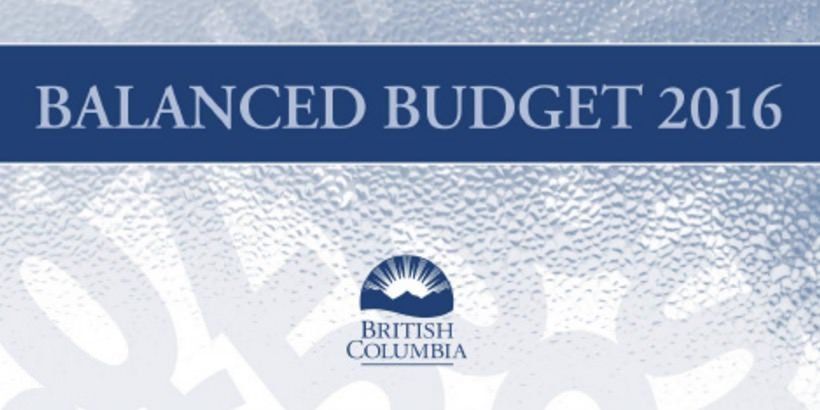Budget 2016—Billed As ‘Growing the Middle Class’
Today’s budget included everything I expected and nothing that I feared. The fears first— there is no change in the tax treatment of capital gains or stock options , despite continued rumours and speculation. Indeed, in a press conference in the lock-up, Minister Morneau said that stock options tax changes are off the table because they are so important to young innovative companies. There is also nothing in the budget designed to tighten credit conditions in the housing markets.
With respect to housing, Ottawa will support the collection of data regarding foreign purchases of Canadian residential real estate, providing additional funding to Stats Canada working with CMHC and British Columbia. Evidence-based assessment of the situation is important.1 Hopefully, governments at all levels will refrain from discouraging foreign investment in housing in a misplaced effort to create more affordable housing. The budget does express concern about affordable housing by investing $2.3 billion over two years for social infrastructure in communities where it is most needed, including $739 million for First Nations, Inuit and northern housing.
Budget 2016 states that “stable and secure housing markets protect the greatest investment of many middle class Canadian families. On December 11, 2015, the government announced coordinated actions to strengthen the resiliency of Canada’s housing finance system, increase market discipline in residential lending, and promote long-term stability and balanced economic growth. The government will continue to closely monitor vulnerabilities related to housing and consumer debt and is prepared to implement further measures, should they be needed.”
This is all good—no messing around with the housing market in this year’s budget, but reasserting a watchful eye on excesses and potential bubbles. There is a growing concern among U.S. hedge fund managers regarding the Canadian housing market and Canadian household debt as many expect a U.S.-style meltdown in Canada, similar to what happened in the U.S. in 2007-2009. This is nothing new, as Canadian pundits and media have been suggesting something similar for several years now. However, vigilance against fraud and insufficient qualifying conditions for credit is important to maintaining the financial stability of our economy and our financial institutions.
Household debt levels are at record highs relative to income and interest rates are at record lows. The Bank of Canada estimates that roughly 8% of households are severely indebted and vulnerable to rising interest rates in the future and/or a job loss owing to economic shocks. The oil price rout has already tested these conditions in Alberta and Newfoundland where credit card delinquency rates are already rising. The use of homes as piggy banks is a concern as home equity lines of credit have grown rapidly. As well, auto loans and credit card borrowing may well be too readily available for a segment of the population that is overstretched.
Budget Fundamentals
As expected, the current fiscal year budget deficit is forecast to come in at just shy of $30 billion ($29.4 billion, to be exact) and to fall only a bit next year (to $29.0 billion), nearly three times the size of deficit promised during the election campaign. As well, deficits will remain over the five-year forecast horizon. There is some cushion here in that these numbers include a $6 billion contingency reserve. But to the surprise of some, there is no estimate of when the federal budget will be balanced.
Despite these large deficits, the federal debt-to-GDP ratio–while rising in the fiscal year (FY) that begins April 1 from 31.2% to 32.5%–will fall over each of the next five years to end FY 2020-21 at 30.9%. Canada has the lowest debt-to-GDP ratio by far in the G7, so no worries here. With interest rates so low, debt servicing costs have dropped sharply.
SUMMARY OF FISCAL DEVELOPMENTS SINCE THE FEBRUARY OUTLOOK
billions of dollars
The major initiatives in this budget were pre-announced. The biggest single spending item on the Liberal docket is the new Canada Child Benefit that swallows four former benefits — including the universal child care benefit and income splitting — into a single new payment targeting middle and lower income Canadian families. The program won’t roll out until July 1, however, as the federal government continues to fine-tune details with the provinces. With a maximum $6,400 a year per child under five and $5,400 annually for kids six to 17, the new benefit is an effort to reduce income equality. The Canada Child Benefit provides a net fiscal stimulus of $3.7 billion this year and $4.3 billion next year, accumulating to just under $8.0 billion over the next five years.
The middle class tax cut was announced last December effective January 1. While it is estimated to provide a net boost to the economy of $1.3 billion this year, the hike in tax rates for incomes over $200,000–which is called “the tax fairness measure” in the budget documents—is estimated to have a net negative economic impact of $0.7 billion over the same period. The negative impact of this tax increase could be substantially greater, especially over the longer term as it dampens entrepreneurial spirit and makes it more difficult to attract and retain talent and new high-growth businesses in Canada.
In addition, budget 2016 extends EI regular benefits by 5 weeks to all eligible claimants, and provides up to an additional 20 weeks of EI regular benefits to long-tenured workers, in the following EI economic regions:
• Newfoundland/Labrador
• Sudbury
• Northern Ontario
• Northern Manitoba
• Saskatoon
• Northern Saskatchewan
• Calgary
• Northern Alberta
• Southern Alberta
• Northern British Columbia
• Whitehorse
• Nunavut
Infrastructure spending increases in the budget are also pretty much as advertised. Phase 1 of the infrastructure plan provides $11.9 billion over five years for public transit, green investments and social infrastructure.
Ottawa estimates that the GDP impact of the combined fiscal stimulus will be 0.5% for FY 2016-17 and 1.0% for the following fiscal year. I forecast that the GDP growth rate in 2016 will be roughly 1.7%, rising to about 2.0% next year.
The big loser in this budget is the energy sector. The government repeatedly states in the budget documents that it will subsidize clean energy initiatives and reduce Canada’s carbon footprint. For example, “the government will invest in electric vehicle and alternative transportation fuel infrastructure.” Ottawa has promised that Canada will be a leader in addressing the causes of climate change. We already know the Liberals are not supporting the Gateway pipeline or pipeline development in general.
The assumption for oil prices in 2016 is $40 (U.S. per barrel for West Texas Intermediate crude oil)—slightly above the current level and well above the lows posted early this year. Oil prices are expected to rise from there to $52 in 2017 and $63 in 2020, still well below the levels posted during the oil boom.
The other economic assumptions in the budget are consistent with the average of private sector forecasts, which have been revised down considerably from budget 2015 because of the larger than expected oil price decline. As well, the Canadian dollar is forecast in the budget to average 72.1 cents U.S. in 2016, well below current levels of 76 cents plus. The loonie is forecast to edge upward gradually over the next five years.
Bottom Line: While there will no doubt be quibbles about the specifics of today’s budget, the good news is that it will provide economic stimulus without threatening Canada’s solid financial position. There is no doubt we will maintain our triple-A rating. The government was urged by some to spend more and by others to spend less, so they have reached a reasonable balance without raising the tax burden further on high-income Canadians. The actions taken will help, at least at the margin, to assure a minimum standard of living for all.
FOOTNOTE:
1 Also on the data collection front, the government will re-introduce the long form census, a move that will be applauded by all economic and demographic researchers.
Share
RECENT POSTS








